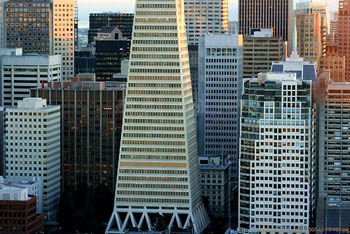
Photo by Flickr user Badger 23
The San Francisco Bay Area is still new to me. I am still trying to learn as much as I can about both the history of art in the area and look forward to the future while taking in the present. My interest in the global/local dynamic as well as the concept of having art world centers means that I’m always trying to assess what kind of art city San Francisco is within a larger context. Glenn Ligon certainly isn’t the first or only person to claim that New York is no longer the center of the art world. While New York is still host to the largest concentration of galleries and museums in the US, it is also just one of many art world centers around the globe, and Los Angeles is developing quickly as another US center. At the same time, locations such as Berlin have become incubation grounds for artists who want the freedom to experiment outside the art market pressures. Then, there are cities like San Francisco and Chicago that are somewhere in between.
San Francisco is often perceived as a city whose regional artists and local nonprofits dominate the city alongside long-standing galleries. As a recent transplant from Chicago, this structure and attitude is familiar; however, this time there are different forces behind why the city’s art scene has developed or is perceived in this way. San Francisco is home to the San Francisco Art Institute and the California College of the Arts—schools that attract curators and teaching artists such as Jens Hoffmann, Hou Hanru, Trisha Donnelly, and Kota Ezawa, among others. The schools also graduate a large number of emerging artists and arts professionals. But, like Chicago, many leave after graduating because the market is not big enough to support them all.
The collector base here is small but strong—and most importantly, values discretion. The flashiness of nearby Los Angeles is not present here. As Ratio3 gallery owner Chris Perez noted in a recent conversation, the collectors in the Bay Area are relaxed but in touch internationally. And it seems that more collectors are looking at work produced in the region now than previously.
So what is it about San Francisco that drives some to call the city’s art scene “eternally becoming”? And is it approaching another moment of “becoming” now that many people from the New York art world are moving to the city and opening spaces? And what does “becoming” allude to? Certainly, San Francisco’s scene (or any other) shouldn’t just be judged on the commercial art market.
I don’t have the answers to these questions yet, but as I’ve been thinking about it, I’ve come across a few interesting articles that I would like to share, as well as some links to exciting new spaces in the city. I’m excited to be in a new city with such a vibrant and complex diversity of the arts.
- First, a thoughtful assessment of Chicago by writer and curator, Anthony Elms in May Magazine.
- A feature in SF Magazine about the “young and hungry” in the SF art world
- Recent New York transplant Claudia Altman-Siegel’s new space: Altman Siegel Gallery S/F
- A small (in size) gallery that is building a big reputation for their thoughtful shows: Jancar Jones Gallery



